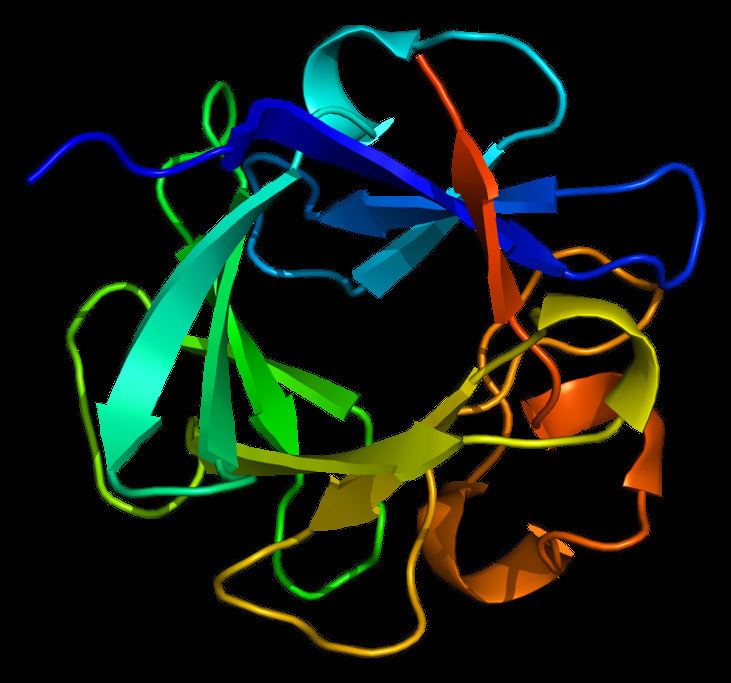Entrez 2249 | Ensembl ENSG00000075388 | |
 | ||
External IDs MGI: 95518 HomoloGene: 1522 GeneCards: FGF4 | ||
Fibroblast growth factor 4 is a protein that in humans is encoded by the FGF4 gene.
The protein encoded by this gene is a member of the fibroblast growth factor (FGF) family. FGF family members possess broad mitogenic and cell survival activities and are involved in a variety of biological processes including embryonic development, cell growth, morphogenesis, tissue repair, tumor growth and invasion. This gene was identified by its oncogenic transforming activity. This gene and FGF3, another oncogenic growth factor, are located closely on chromosome 11. Co-amplification of both genes was found in various kinds of human tumors. Studies on the mouse homolog suggested a function in bone morphogenesis and limb development through the sonic hedgehog (SHH) signaling pathway.
Function
During embryonic development, the 21-kD protein FGF4 functions as a signaling molecule that is involved in many important processes. Studies using Fgf4 gene knockout mice showed developmental defects in embryos both in vivo and in vitro, revealing that FGF4 facilitates the survival and growth of the inner cell mass during the postimplantation phase of development by acting as an autocrine or paracrine ligand. FGFs produced in the apical ectodermal ridge (AER) are critical for the proper forelimb and hindlimb outgrowth. FGF signaling in the AER is involved in regulating limb digit number and cell death in the interdigital mesenchyme. When FGF signaling dynamics and regulatory processes are altered, postaxial polydactyly and cutaneous syndactyly, two phenotypic abnormalities collectively known as polysyndactyly, can occur in the limbs. Polysyndactyly is observed when an excess of Fgf4 is expressed in limb buds of wild-type mice. In mutant limb buds that do not express Fgf8, the expression of Fgf4 still results in polysyndactyly, but Fgf4 is also able to rescue all skeletal defects that arise from the lack of Fgf8. Therefore, the Fgf4 gene compensates for the loss of the Fgf8 gene, revealing that FGF4 and FGF8 perform similar functions in limb skeleton patterning and limb development. Studies of zebrafish Fgf4 knockdown embryos demonstrated that when Fgf4 signaling is inhibited, randomized left-right patterning of the liver, pancreas, and heart takes place, showing that Fgf4 is a crucial gene involved in developing left-right patterning of visceral organs. Furthermore, unlike the role of FGF4 in limb development, FGF4 and FGF8 have distinct roles and function independently in the process of visceral organ left-right patterning. Fgf signaling pathway has also been demonstrated to drive hindgut identity during gastrointestinal development, and the up regulation of the Fgf4 in pluripotent stem cell has been used to direct their differentiation for the generation of intestinal Organoids and tissues in vitro.
